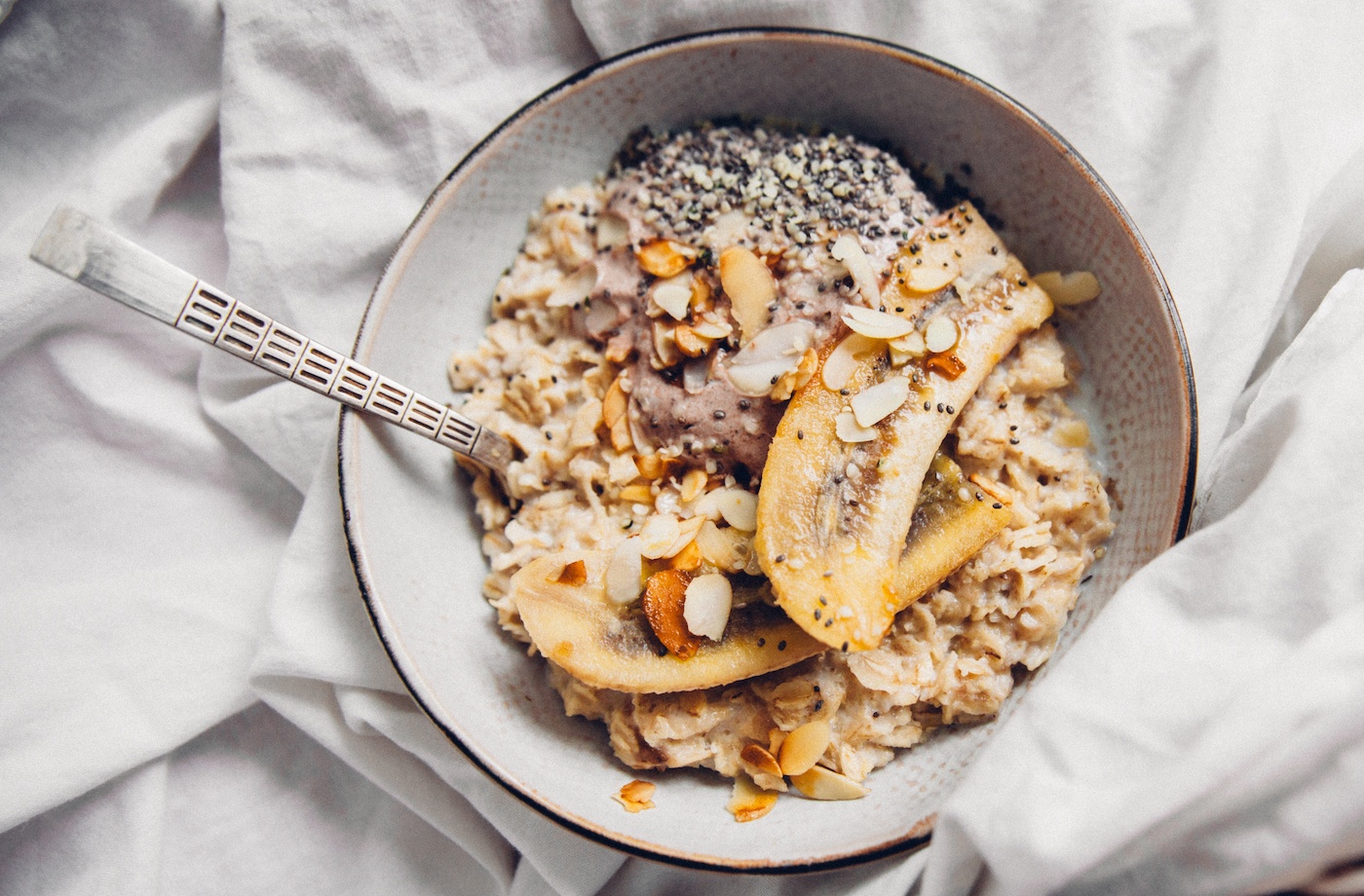
January 26, 2020 at 12:00PM by CWC
Confession: I’ve been eating oatmeal for breakfast (almost) every single day for years. Overnight oats, in particular, are my fave because I can prep them at night, pop them in the fridge, and ta da! Breakfast is ready for me in the morning. That said, I won’t say no to a warm bowl of goodness either.
Oatmeal is a habit I can’t seem to quit, but I’m not mad at it for a few reasons. Numbers one and two: It’s healthy and filling. Dietitians swear by it—as Tracy Lockwood Beckerman, RD, previously told Well+Good, “Oats contain a unique form of soluble fiber known as beta-glucan which helps you stay satiated for hours.” Three, it’s so easy and quick to make, especially if you’re like me and can’t be bothered to cook every morning. And four, the possibilities for flavor combinations are endless. The oatmeal itself is really just a blank canvas for whatever toppings you want to add.
Need some inspo for what to put in oatmeal? Check out these 11 RD-recommended toppings to jazz up your bowl and elevate its nutritional value.
1. Date syrup
ADVERTISEMENT
ADVERTISEMENTKate Spade Autumn/Winter Sale |
Bored of honey and agave? Shake things up by sweetening your oatmeal with date syrup instead. “Date syrup is made from the superfruit dates, so it’s naturally rich in stress-relieving magnesium and potassium,” says Beckerman, who’s also the author of The Better Period Food Solution and host of Well+Good’s You Versus Food. “There are a lot of fun brands to try, but I’ve been choosing Joolies’s organic medjool date syrup because they don’t add any sweeteners or concentrates to their final product, so it’s good in my book.”
2. Tiger nuts
Skip the almonds and sprinkle some tiger nuts in your oatmeal for crunch instead. Contrary to what their name suggests, tiger nuts, which are sweeter than almonds and have a chickpea-like shape, are not actually nuts. “They are classified as a tuber, a small root veggie—so the same categories as yams and potatoes—yet they taste very different,” Beckerman says. “They serve as a prebiotic to the body so they help to build a healthy, balanced and diverse microbiome in the gut.”
3. Flaxseed
Flaxseed’s mild, nutty flavor won’t necessarily do wonders for your oatmeal in terms of taste, but it’ll sure take its nutritional benefits up a notch. Beckerman recommends sprinkling golden flaxseed meal on top of your oatmeal or mixing it right into your oatmeal to get your dose of anti-inflammatory omega-3s and hormone-balancing nutrients such as zinc and calcium and help keep you full.
4. Greek yogurt
If you want a boost of protein in your morning oats, add Greek yogurt to your grocery cart. “Greek yogurt is a creamy, thick yogurt, which has been strained to remove the liquid whey protein,” says Brittany Modell, MS, RD, and founder of Brittany Modell Nutrition and Wellness. “It is packed with probiotics, which enhance the microbiome and is a rich source of calcium and B12.”
5. Berries
Not only do berries instantly turn a boring bowl of oatmeal into an Instagram-worthy piece of art, they’re also full of health benefits. “Berries are rich in vitamins and minerals, such as polyphenols and flavonoids, which are loaded with antioxidants,” Modell says. “They are [also] high in fiber. [For example,] 1 cup of raspberries provide a whopping 8 grams of fiber. You can buy them fresh or frozen for the same health benefits.”
6. Peanut butter
While there are an abundance of alternative nut butters out there (almond, cashew, sunflower seed, for example), there’s nothing like the oldie-but-a-goodie peanut butter, especially as an oatmeal topping. “It adds a layer of gooey sweetness to oats,” Modell says. “Peanut butter is also nutrient dense, filled with healthy monounsaturated fats, fiber, and protein. It is incredibly satiating and gives oatmeal the necessary staying power to get you through until lunch.”
7. Chia seeds
Chia seeds may be tiny in size, but they are mighty when it comes to nutrients. “These tiny seeds are a rich source of omega-3 fatty acids (ALA), calcium, antioxidants, phosphorus, and fiber,” Modell says. “In fact, there are 10 grams of fiber per 2 tablespoons. The majority—87 precent—of total fiber content comes from insoluble fiber, which aids the digestive system and promotes bathroom regularity.” Plus, when soaked in liquid, chia seeds create a gelatinous texture making it great for both hot oatmeal or overnight oats.
8. Grated carrots
If you really want to get creative with your oats, think beyond just nuts, seeds, and fruits. Case in point: grated carrots. They’re a great way to start your day with some veggies. “They provide a natural sweetness and boost of fiber,” Modell says. “One cup of shredded carrots provides 3 grams of fiber. Carrots are also rich in beta carotene and other antioxidants.”
9. Riced cauliflower
As if you needed another reason to enjoy the trendy cruciferous veggie, Krista King, MS, RDN, of Composed Nutrition recommends adding riced cauliflower to your oatmeal not only for taste purposes but also to help control blood sugar. “Cauliflower is a great source of fiber and has a low glycemic index, meaning it affects blood sugar slowly,” she says. “Using half oats and half riced cauliflower is a great alternative for anybody with insulin resistance or needing tighter blood sugar control.”
10. Tahini
For those with a nut allergy, King suggests adding tahini to your oatmeal as a nut butter alternative. “Tahini is a ground sesame seed paste with a similar consistency to peanut butter,” she says. “Sesame seeds contain healthy fats and hormone-supportive nutrients like zinc, magnesium, and vitamin B6, which can help support a healthy menstrual cycle.”
11. Turmeric
Good for both sweet and savory oatmeal bowls, King suggests adding turmeric for a sweet, nutty flavor. “Turmeric is a spice with a vibrant yellow color due to the active compound curcumin, which is responsible for its anti-inflammatory benefits,” she says. Those anti-inflammatory benefits, she adds, can also be maximized by sprinkling in some black pepper, which contains a compound called piperine that increases the absorption of curcumin.
For more information regarding the health benefits of turmeric and curcumin, watch the below episode of You Versus Food:
ADVERTISEMENT
ADVERTISEMENTSports Direct Free Delivery on All Orders! |
Looking for more breakfast inspo? Here’s how to make the perfect egg dish, and the two-ingredient meals doctors eat every morning.
Author Jessica Estrada | Well and Good
Selected by CWC

ADVERTISEMENT
ADVERTISEMENTUp to 30% off Gift Sets |







